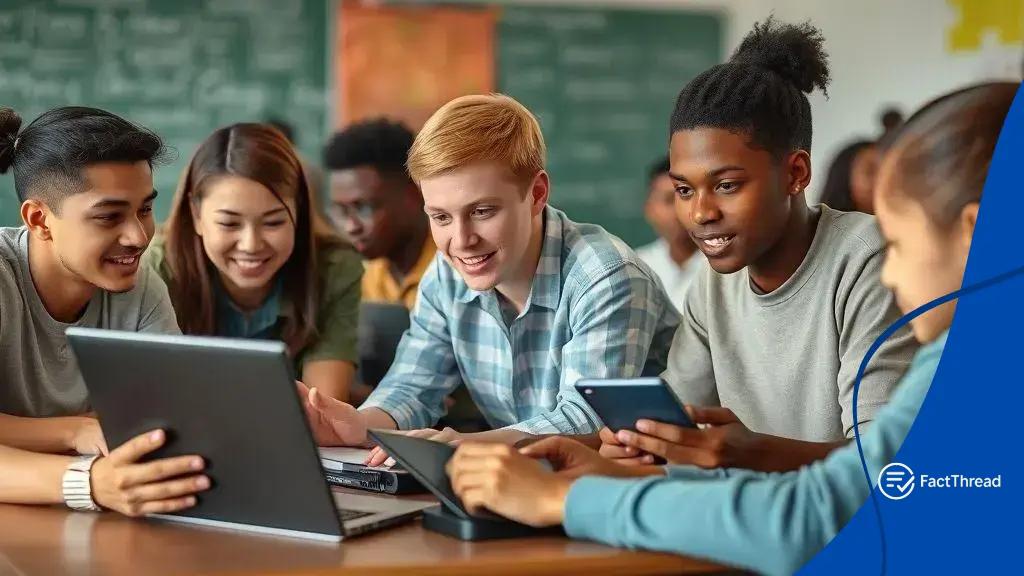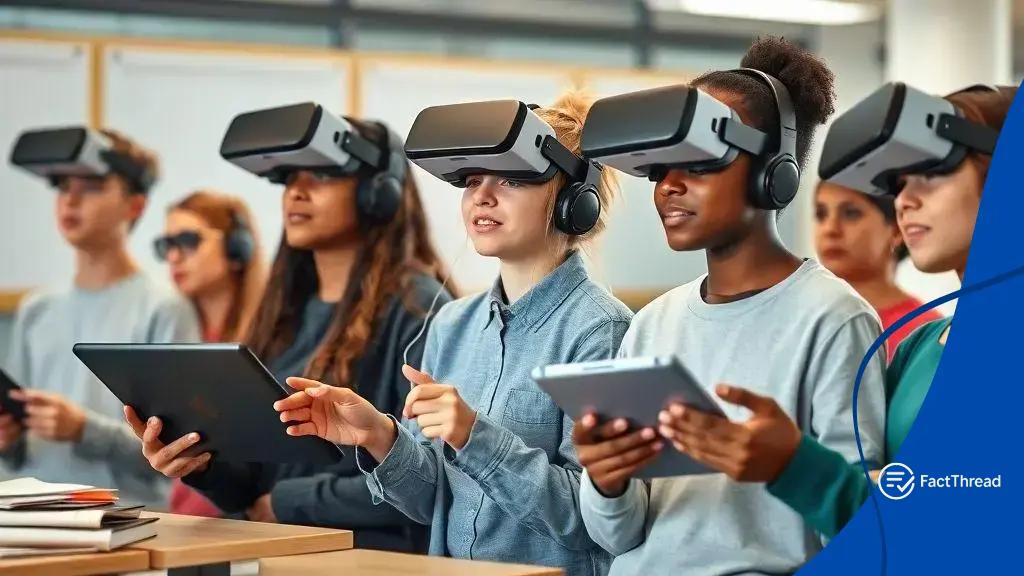Educationaccesszone: Unlocking Opportunities for Learning

Education access refers to the availability of learning opportunities for all individuals, facilitated by innovative tools and technologies that ensure inclusivity and overcome barriers to education.
Educationaccesszone is transforming the landscape of learning, making it more accessible for everyone. Have you ever thought about how this could change your opportunities?
Understanding educationaccesszone
Understanding educationaccesszone is crucial for anyone looking to expand their learning opportunities. This concept focuses on bridging gaps in access to education, ensuring that all individuals can benefit from available resources.
One key element of educationaccesszone is the diverse range of tools available. These tools can include online courses, educational software, and community resources that make learning more accessible to everyone. By utilizing these resources, learners can overcome barriers that prevent them from achieving their educational goals.
Key Components of educationaccesszone
There are several important components that make up educationaccesszone:
- Technological integration helps bring education to remote areas.
- Community initiatives support traditional learning methods.
- Policy changes encourage inclusive educational practices.
- Partnerships with organizations improve resource availability.
In addition, understanding how educationaccesszone operates is essential. It not only involves providing resources but also developing a community that supports collaborative learning. Students can share knowledge and experiences, which enhances the overall educational environment.
The impact of educationaccesszone is significant. By lowering barriers to entry, learners of all backgrounds can access the services they need. This inclusivity leads to a richer learning experience and promotes lifelong learning.
Moreover, as we delve deeper, we begin to see the long-term benefits of this approach. When education becomes accessible, society as a whole benefits, leading to a more informed and engaged populace. Therefore, embracing the educationaccesszone concept is not just a trend; it is a necessary evolution towards a better future.
The benefits of educationaccesszone
The benefits of educationaccesszone are numerous and impactful. By focusing on accessibility, this framework opens up educational opportunities for everyone, regardless of their background.
One major advantage is increased access to resources. Students can utilize online courses and digital materials without being limited by their geographic location. This flexibility allows for a personalized learning experience tailored to individual needs.
Key Benefits of educationaccesszone
Several key benefits support the importance of educationaccesszone in today’s learning environment:
- Enhanced learner engagement through interactive tools and community support.
- Opportunities for skill development that align with current job market demands.
- Lowered financial barriers with free or low-cost educational options.
- Promotion of lifelong learning by making information readily available.
Additionally, educationaccesszone fosters collaboration among learners. With diverse perspectives coming together, students not only learn from their instructors but also from one another. This peer learning enhances understanding and retention of information.
Moreover, the emphasis on technology integration helps streamline the learning process. Students can leverage various online platforms for both communication and research, creating a smooth workflow for their educational journey.
By prioritizing inclusivity, educationaccesszone ultimately prepares learners for success in a complex world. The skills and knowledge they gain are applicable beyond the classroom, leading to better opportunities in their future careers and personal lives.
Innovative tools for enhancing education access

Innovative tools for enhancing education access play a crucial role in transforming learning experiences. These tools help break down barriers that prevent individuals from obtaining quality education.
One significant advancement is the rise of online learning platforms. These platforms offer flexibility, allowing students to learn at their own pace from anywhere in the world. This accessibility is vital for those in remote areas or with scheduling conflicts.
Types of Innovative Tools
Several types of tools are essential for improving education access:
- Learning Management Systems (LMS): These systems organize educational content and track student progress.
- Virtual Reality (VR): VR creates immersive learning experiences that can engage students in ways traditional methods cannot.
- Mobile Applications: Educational apps provide resources on-the-go, making learning convenient and interactive.
- Webinars and Online Workshops: These sessions allow experts to share knowledge with a broader audience.
In addition to these tools, social media also contributes to the education access landscape. Platforms like Twitter and Facebook facilitate discussions and communities focused on shared learning goals. This social interaction can enhance motivation and engagement among learners.
Furthermore, data analytics is becoming an essential part of educational technology. By analyzing user data, educators can tailor their approaches to meet the specific needs of their students. This personalization ensures that learners receive the support they require to succeed.
As technology continues to evolve, so too will the tools available for enhancing education access. The integration of artificial intelligence into learning environments is a promising development, offering adaptive learning experiences that can respond to the unique needs of each student.
Real-life success stories in education access
Real-life success stories in education access highlight the transformative power of overcoming barriers to learning. These stories showcase how individuals and communities have used innovative solutions to achieve educational goals.
One inspiring example is a young woman from a rural area who accessed online classes through a local community center. With limited resources and a desire to pursue a career in technology, she utilized the center’s internet and computers. Today, she works as a software developer, proving that education access can change lives.
Examples of Successful Initiatives
Various initiatives have made significant impacts in enhancing education access:
- Partnerships with Tech Companies: Organizations have collaborated with tech firms to provide free resources and equipment.
- Scholarship Programs: Many programs help underprivileged students afford college and vocational training.
- Local Libraries as Learning Hubs: Libraries have become central points for educational events and workshops, offering free learning opportunities.
- Community-driven Tutoring: Volunteers offer tutoring services to students in need, support that can change academic trajectories.
Another powerful story comes from a group of adult learners in a city who formed a study group. They leveraged free community classes to improve their literacy skills. The determination and collaboration within the group led several members to earn their GEDs, opening up new job opportunities.
Moreover, success stories extend beyond individuals. Schools adopting technology to connect students with virtual teachers have seen improved academic performance. By incorporating diverse learning methods, these schools ensure that every student can thrive.
These examples illustrate that when we prioritize education access, we can foster a future where everyone has the chance to succeed. The ripple effects of these success stories influence families and communities, spreading hope and opportunity.
Future trends in education access
Future trends in education access are shaping how learners will engage with knowledge in the coming years. The landscape of education is rapidly evolving, influenced by advances in technology and societal changes.
One major trend is the increasing use of artificial intelligence in education. AI can personalize learning experiences, adapting content to meet the needs of individual students. This technology can analyze a student’s progress and suggest resources, making learning more efficient.
Emerging Technologies in Education
Several technologies are set to enhance education access:
- Virtual Reality (VR): VR can offer immersive learning experiences, allowing students to explore new environments in a virtual setting.
- Augmented Reality (AR): AR overlays digital information onto the physical world, enriching learning materials and making them interactive.
- Mobile Learning: With smartphones, students can learn anywhere, providing flexibility and convenience.
- Blockchain: This technology may provide secure and verifiable credentials for students, making it easier to track educational achievements.
Additionally, there is a growing focus on accessibility for all learners. Schools and organizations are prioritizing inclusive educational practices to ensure that students with varying abilities have equal access to resources. This shift promotes a culture of diversity and supports the idea that every learner deserves a chance to thrive.
Furthermore, online communities are becoming integral to education. Students can connect with peers and educators from around the world, fostering collaboration and knowledge sharing. These networks create opportunities for mentorship and support, breaking down the barriers of traditional classroom settings.
Moreover, as remote learning continues to be a viable option, high-quality online courses and resources will remain in demand. Educational institutions will need to invest in robust digital infrastructures to support this shift and provide seamless learning experiences.
FAQ – Frequently Asked Questions about Education Access
What is education access?
Education access refers to the ability for all individuals to obtain learning opportunities, regardless of their background or circumstances.
How does technology improve education access?
Technology enhances education access by providing online resources, interactive learning tools, and flexible learning environments.
What are some examples of successful education access initiatives?
Successful initiatives include online learning platforms, community libraries offering tutoring, and scholarship programs for underprivileged students.
Why is inclusivity important in education?
Inclusivity ensures that all learners, regardless of their abilities or backgrounds, have equal access to quality educational resources and support.